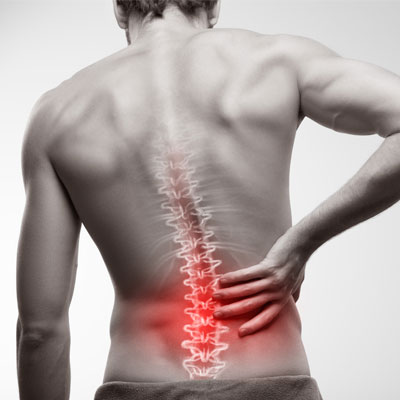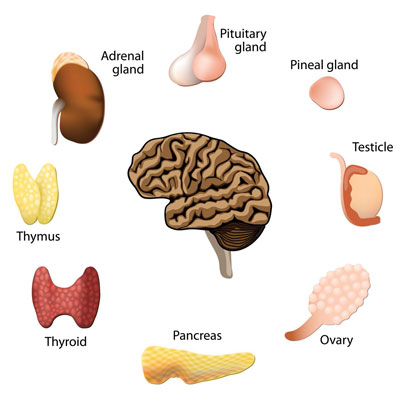Contents

Hormones are the body’s chemical messengers – delivering vital signals to the many different cells we have. However, each hormone has its own target cells. These are the only cells it can bind with to initiate its unique actions.
Upon secretion from their originating cells in various glands or organs, hormones enter either the bloodstream or travel in the fluid surrounding the cells. Once a hormone arrives at a target cell, it will bind with protein receptors located on the cell’s surface or inside the cell. Upon binding, the protein receptor takes the message from the hormone to alter the cell’s activities and carry out the required function through altering cellular protein activity or gene expression.
As hormones move through the body, their distance traveled is determined by their function and target cells. Some hormones, such as Trusted sourceGrowth Hormone (Somatotropin)VIVO PathophysiologyGo to sourcesomatotropin (growth hormone), have receptor cells on all tissues and throughout the brain. These hormones travel throughout the entire body. Other hormones, such as gonadotropin-releasing hormone (GnRH), travel only a short distance. In the case of GnRH, upon exiting the hypothalamus, it travels only to the pituitary gland where it stimulates the production of other hormones that travel greater distances through the bloodstream.
There is also a difference in target cells, as some accept only one hormone, while others may contain receptors for many different chemicals. We see this action occur with receptor cells that accept estrogen, progesterone, testosterone, vitamins A and D (also hormones), and Trusted sourceGlucocorticoidsHealthlineGo to sourceglucocorticoids .
Being water or fat-soluble are also two ways hormones move through the body. A water-soluble hormone can bind to the protein receptor on the cell’s plasma membrane. A fat or lipid-soluble hormone needs to diffuse through the cell’s plasma membrane to enter the target cell’s cytoplasm before binding to the protein receptor. The ensuing molecular chain of events results in the activation of nuclear gene expression.
Hormone signaling is a complex process, as the way a hormone functions may vary depending on the location of the receptor cell. Again, we use growth hormone as an excellent example. GH receptor cells on bones help support bone cell regeneration. The action is different in the brain, where GH receptor cells may promote learning, memory, or emotional well-being.
| The Steps of Hormone Signaling |
| Biosynthesis or manufacturing of the hormone in its producing cells |
| Storage of the hormone until secretion |
| Secretion of the hormone |
| Transport through the bloodstream or intracellular fluid (bound to a protein if necessary) |
| Arrival at a target receptor cell |
| Binding to the receptor cell |
| Activation of gene expression in the receptor cell |
| Potential feedback of the signal to the hormone-producing cell |
Hormones travel through the bloodstream or in intracellular fluid to reach their targeted receptor cells.
Movement of Endocrine and Neurosecretory Signals
In our first look at how do hormones move throughout the body, we examine the long-distance chemical messengers. This group of hormones provides endocrine and neurosecretory signals and travel through the bloodstream.
Hormonal release occurs in either an endocrine gland cell or neurosecretory cell where it then enters the blood vessel to travel to its target cell.
The hypothalamus and pituitary gland make up the hormonal command center of the endocrine system. Their hormones play roles in many of the major functions in the body, as well as cause the secretion of other vital hormones.
As we understand how do hormones move through the body, we also note that the many responses to the activation that occurs at the cellular level can differ significantly. Cellular responses to a hormone may include:
- Protein synthesis stimulation
- Enzyme activation
- Enzyme deactivation
- Altered mitosis and cellular growth
- Changes in cell membrane permeability
- Stimulation of other hormones
Endocrine and Neurosecretory signals travel long-distance through the body to their receptor cells.
Movement of Paracrine, Autocrine, and Synaptic Signals
Our next look at how hormones move through the body features the local messengers. These hormones fall into the autocrine, paracrine, and synaptic categories. Ligands are signaling molecules that bind to their receptors.
Paracrine hormones enter the body into the interstitial fluid (located between cells) and go straight to nearby target cells to diffuse. These ligands allow communication with neighboring cells. Histamine and insulin are examples of paracrine hormones.
Autocrine hormones influence the same cells that secreted them, causing the secretion of other hormones or enabling specific processes. One example of this is the cytokine interleukin-1 in monocytes that can bind to the same cell it came from. A cell can use this activity to cause its own death when infected with a virus. It is also the same process as with a cancer cell causing its own proliferation.
A different view of how do hormones move through the body occurs with synaptic signaling. Synaptic hormone signaling takes place between nerve cells (neurons) and between muscle cells and neurons. These are fast-moving impulses that travel through dendrites between the nerve cells by releasing chemical ligands known as neurotransmitters.
Paracrine, Autocrine, and Synaptic signals travel a short distance to bind with their receptor cells.
Difference in Movement between Water and Fat-Soluble Hormones
Grouping of hormones is also by chemical structure – whether they are water or fat-soluble. Some cells travel freely on their own while others require binding to a protein for transport. Fat-soluble hormones can bind to receptors on the inside or outside of a cell, although most occur within the cytoplasm of the nucleus. Water-soluble hormones bind to the outside of the receptor cell.
Do hormones move throughout the body at the same speed?
No, that is also something that varies greatly. For example, growth hormone enters the body in pulsatile bursts that propel it quickly through the bloodstream. Once GH finds its target receptor cells, it binds together and rapidly exits the bloodstream. Other hormones move slowly, staying in the bloodstream all the time.
What are some of the differences in how hormones move through the body?
Fat-soluble steroid hormones are synthesized from cholesterol and consist of androgens (testosterone), estrogens, and progesterone. After steroid hormones enter the nucleus of the cell, they bind to the receptors and trigger the production of proteins. Because fat-soluble hormones repel water, they require binding to proteins that can travel freely through water (the bloodstream). Lipid-soluble thyroid hormones contain iodine-studded benzene rings and enter their receptor cells to bind with receptors attached to DNA.
Water-soluble amino acid hormones, such as epinephrine, bind to the protein receptors on the surface outside of the cell. That causes a messenger molecule within the cell to activate enzymes and proteins or stimulate gene expression.
Water-soluble polypeptide hormones such as growth hormone and insulin wait until they are needed before entering the bloodstream.
If you still have questions about how do hormones move through the body, please contact our hormone clinic. Consultations are free and confidential.
Fat-soluble hormones require binding to a protein to travel through the body before diffusing into the cell. Water-soluble hormones travel freely through the bloodstream and bind to the outside of the receptor cell.
- Robert D. Utiger, Prof.
- Cathryn M. Kolka PhD., Richard N. Bergman PhD.
- U.S. National Library of Medicine
The Barrier Within: Endothelial Transport of Hormones









